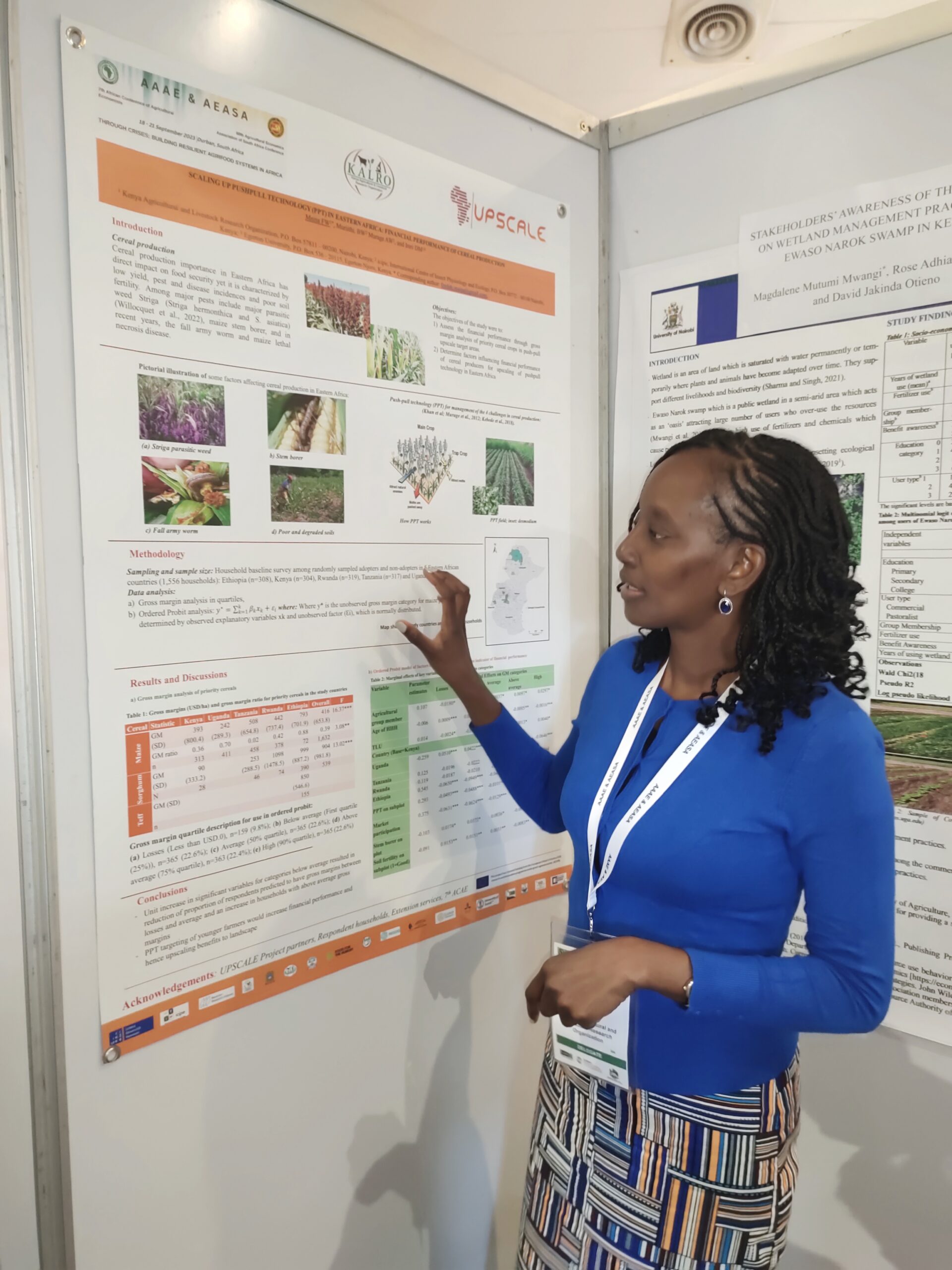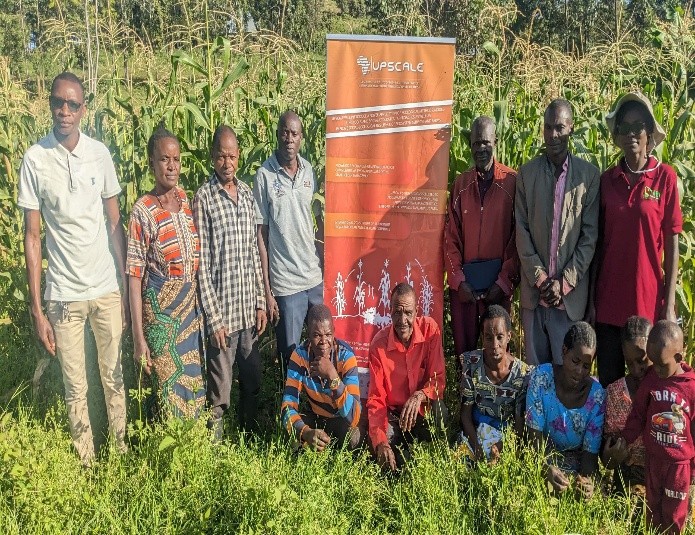Name of the event: The 7th African Conference of Agricultural Economists & 60th Annual AEASA Conference
Date: The meeting took place from the 18th to the 21st of September 2023
Organiser: The conference was organised by the African Association of Agriculture Economists (AAAE), jointly organized with the Agricultural Economics Association of South Africa (AEASA)
Venue: Durban, South Africa
“Since the turn of the century, the African agri-food system has been plagued by an increasing number of extraneous shocks and stressors, stemming from a variety of sources, including climatic and natural disasters, man-made conflicts, health-related issues, and macroeconomic factors. These events are disruptive to populations and their livelihoods and, unless adequately addressed, they will impede Africa’s structural transformation through their adverse impact on agriculture and the wider food system.”
In light of this, the 7th African Conference of Agricultural Economists, having taken place in Durban, South Africa, on 18-21 September 2023, and jointly organized with the Agricultural Economics Association of South Africa (AEASA), explored the theme “Through Crisis: Building Resilient Agri-food Systems in Africa.” The conference brought together leading scholars, policymakers, agribusiness representatives and development practitioners to reflect on recent developments in African agricultural systems and identify pragmatic approaches to building a more resilient and sustainable African agriculture.
UPSCALE’s project partners Alice Murage, Beatrice Muriithi, Fredah Maina and Dave Ireri participated as speakers and panellists. Our partners held presentations introducing UPSCALE progress and results on sustainable intensification practices.
We are sharing the abstracts below and congratulate the whole team for this sussess!
Tradeoffs and Complementarities in the adoption of Push-pull Technology and other sustainable agricultural practices in East Africa
Abstract
The agri-food system currently faces multiple threats that continue to weaken its resilience. Climate change and the widespread environmental challenges of our time on food systems are evident, requiring the adoption of integrated strategies to reduce the associated adverse effects. This paper examines the synergies and trade-offs of different sustainable agricultural practices and the determinants of their adoption among smallholder cereal growers in East Africa. We pay more attention to “push-pull technology (PPT)”, a conservational biological control strategy that addresses the triple burden of stemborer and fall armyworm pests and Striga weed in Sub-Saharan Africa. We find complementarities between PPT and other sustainable agricultural practices. The adoption of SAPs is influenced by plot characteristics, social networks, credit access and quality of extension services, the incidence of drought, age, and education. The results provide policy insights needed to enhance the greater adoption of SAPs.
Keywords: Push-pull
Economic efficiency of cereal production under push-pull technology and non-push-pull farms in Eastern Africa region
Abstract
Most governments in SSA are struggling to secure food security for the citizens focusing mainly on cereal crops which are the main staple food in most households. Efforts have been made to promote agricultural intensification through the adoption of integrated technologies such as push-pull technology (PPT) that simultaneously manage several farming constraints associated with low productivity. This technology was introduced by the International Centre of Insect Physiology and Ecology (icipe) in the early 1990s and has been disseminated across the Eastern Africa region. Despite the benefits associated with such technologies, a yield gap in cereal production still exists, and cereal productivity continues to perform below average. One way of increasing productivity is to understand the main causes of inefficiencies and hence devise appropriate strategies to overcome them. The current study sought to evaluate the economic efficiency of maize production under the PPT and non-PPT sub-plots. The study used longitudinal data from 5 study countries (Kenya, Uganda, Tanzania, Rwanda and Ethiopia) obtained through a baseline survey. Descriptive analysis was done for all the socio-economic and farm characteristics, while economic efficiency was calculated for PPT, non-PPT and overall sample, using the parametric Stochastic Frontier Analysis (SFA). The three estimated models were significant with goodness of fit. A positive coefficient shows a variable that enhances economic efficiency, while a negative on shows a reduction in efficiency. Sub-plot area, cost of fertilizer and chemicals had a positive impact on economic efficiency for both PPT and non-PPT models; harvesting and threshing labour was positive for non-PPT; ploughing cost was positive or PPT and weeding labour negative for non-PPT. Variables on stemborer infestation, and land preparation methods were the main idiosyncratic variables that had either a positive or negative effect on economic efficiency. Additionally, the socio-economic and management factors that were significant were credit constraint, extension constraint, PPT use, gender, household size and country variable. These results are key in sub-plot management as they give insight into the areas which require attention in order to increase economic efficiency. The results can be used by farmers and/or extension agencies in advising farmers on what to do in order to reduce inefficiencies and therefore improve productivity.
Keywords: Economic efficiency, Stochastic Frontier Analysis, cereal production
Economic impact of Push Pull Technology among smallholder cereal farmers in Eastern Africa
Abstract
This article analyses the economic impact of Push-Pull technology (PPT) adoption using data collected from 1556 households in five countries of Eastern Africa including Kenya, Uganda, Tanzania, Rwanda, and Ethiopia. Using propensity score matching (PSM), the study indicates that the adoption of PPT technology increases maize yields by a range of 273 to 520 kilograms per hectare; increases maize gross margin (increased revenue is higher than the increased production cost); and improves food security. The article concluded that the adoption of PPT has positive economic benefits and as such, stakeholders should strengthen efforts to upscale the technology in sub-Saharan Africa not only in areas prone to striga and stemborer but also to other farmers in order to increase cereal production and improve the regional food security.
Financial performance of cereal production as a baseline for upscaling Push-Pull technology in Eastern Africa
Abstract:
In Eastern African countries, agricultural production is a major contributor to the national economies, with small-scale farmers making up for the larger proportion of producers. Despite the importance of cereals, average yield especially for maize, sorghum, and millets, remains lower than the potential due to various challenges including pests and diseases which in turn affect financial performance. Push-Pull technology was developed as a sustainable approach to managing pests in cereal production while providing additional ecosystem services. Efforts to scale up the benefits of the technology are underway. The objective of this study was to determine the levels and factors influencing the gross margin of cereal production in Eastern Africa. The analysis was conducted at the sub-plot level, with a sample size of 349, 435, 516, 466,623 subplots in Kenya, Uganda, Tanzania, Rwanda and Ethiopia respectively. This gave a total of 2,389 subplots under various cereals. Gross margin for maize was highest in Ethiopia (USD.793/ha) and lowest in Uganda (USD.242/ha). Sorghum’s gross margin was highest in Rwanda (USD.1,098/ha) and lowest in Kenya (USD.90/ha). Variables that significantly influenced the level of gross margin included being a member of an agricultural group, age of the household head (negative influence), tropical livestock units, having Push-Pull technology on the cereal plot, participating in the market for cereal produced and presence of stem borer on the subplot as well as perceived soil fertility of the sub-plot. Participatory approaches that will identify factors influencing financial performance (high costs, low productivity) will be essential in upscaling Push-Pull technology.
Authors for all abstracts: Alice Murage, Beatrice Muriithi, Fredah Maina and Dave Ireri



